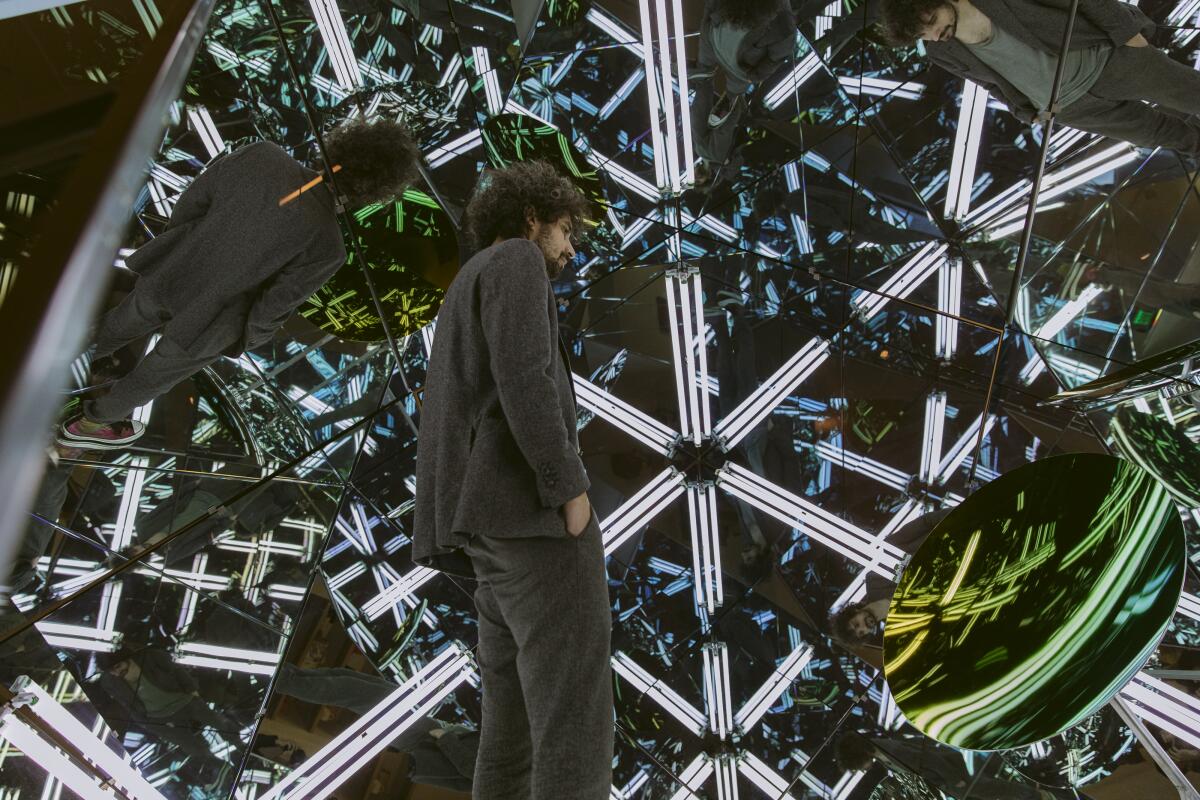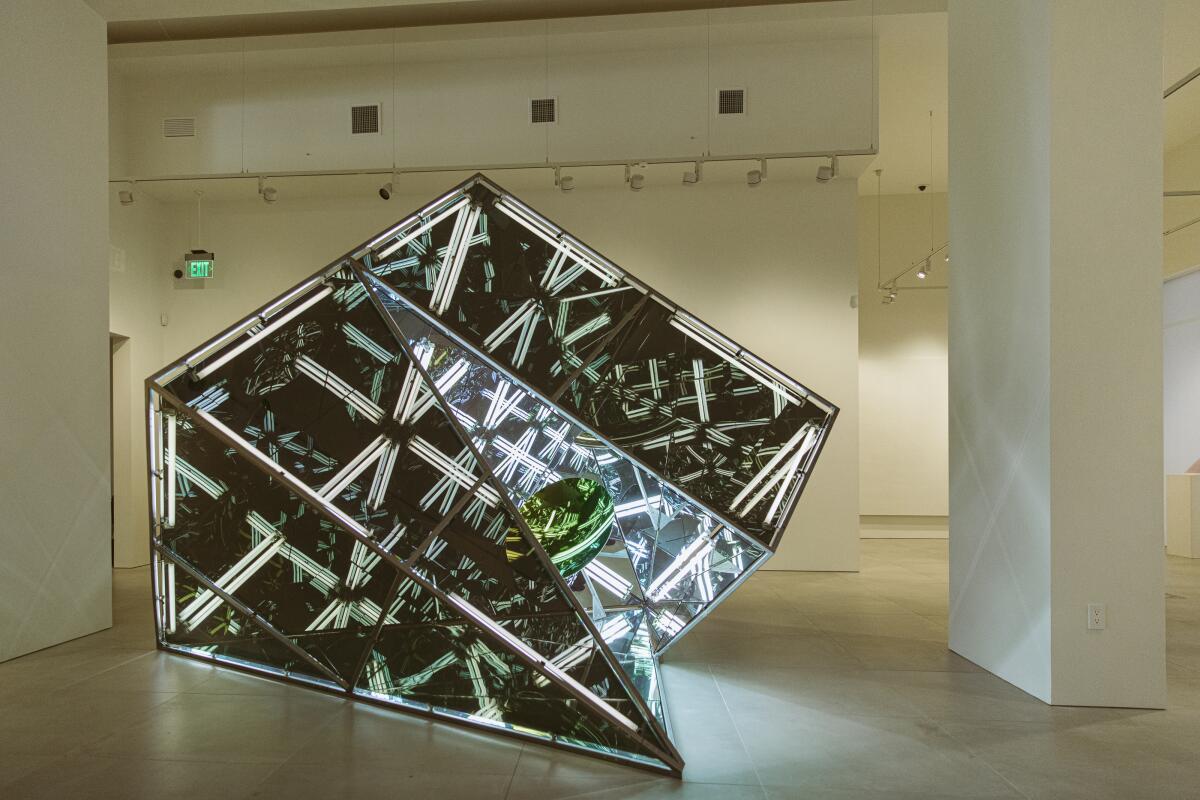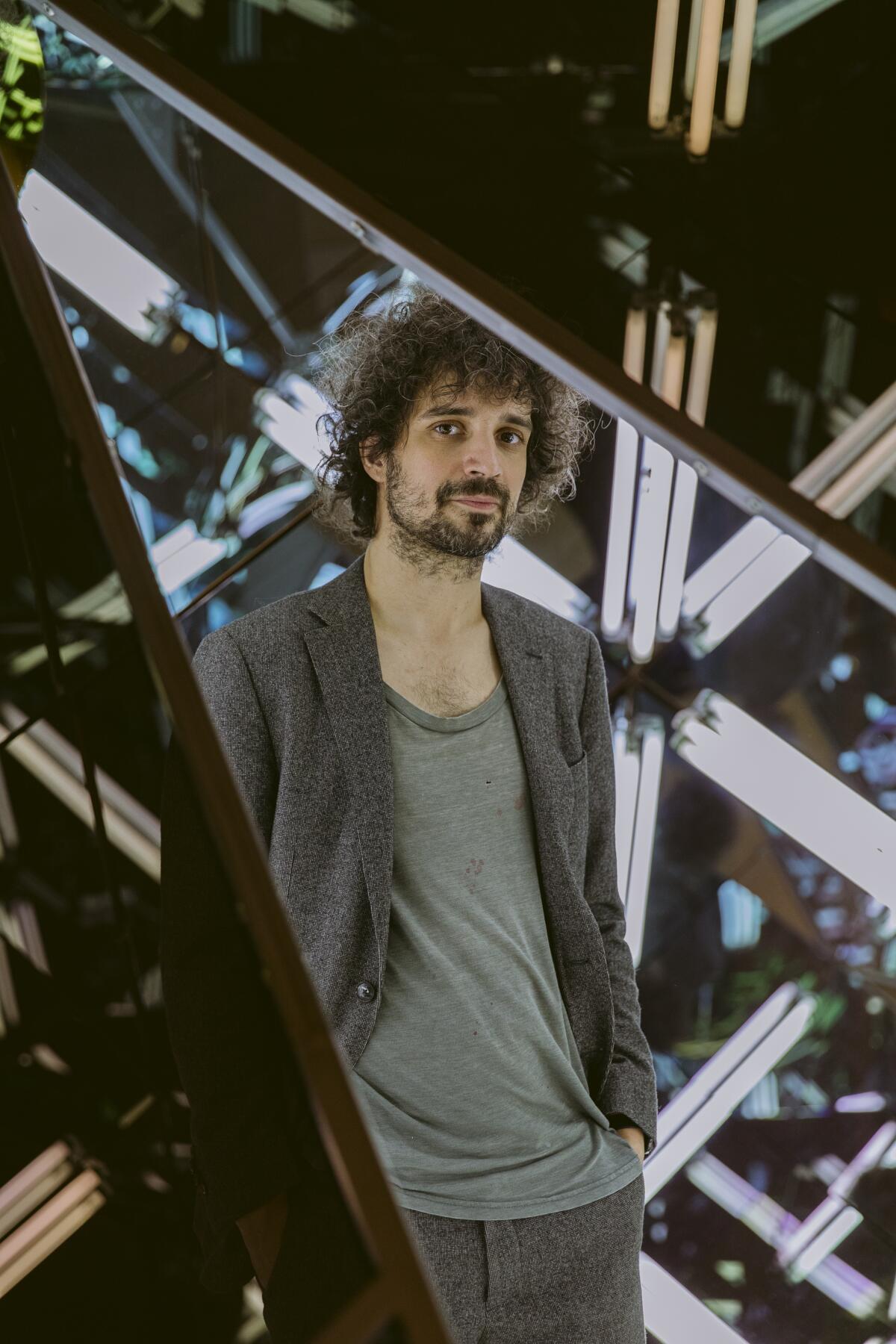Fabrizio Moretti, drummer of the Strokes, invites you to step into the rhythm of light

I guess I was searching for Hanukkah. Somewhere between March 2020 and November 2021, I seem to have misplaced my Jewishness. I’d long ago tired of Zoom Seders and holiday light drive-throughs, even religious services in backyards and parks. With family back east and still working at home 21 months into the pandemic, I’d fallen into something of a social slump; my world had gotten uncomfortably small.
“Who were my Jewish friends, again?” I thought, scrolling through my phone. “There must be something going on for Hanukkah,” (which had admittedly snuck up on me the Sunday after Thanksgiving).
It was dusk and the view looking into my backyard felt symbolic: worn string lights tangled in the trees, with bulbs burnt out or shattered.
But then I found a little sliver of Hanukkah — the lights at least — visiting with the Strokes drummer, Fabrizio Moretti. At Sotheby’s in Beverly Hills, of all places.
Moretti, who accepted a Grammy with his bandmates earlier this year for rock album, is also a visual artist — he studied sculpture at State University of New York at New Paltz for three years before dropping out to pursue music full time. He created an immersive sculptural installation that goes on view Friday at Sotheby’s. It’s part of a larger exhibition featuring work by light and space artists such as Robert Irwin, Helen Pashgian, Mary Corse, Peter Alexander, Larry Bell, Gisela Colon and others.
The work is a 9-foot-high hollow cube — or “Kube,” as it’s titled — made of polished steel and glass, with two corners cut out and tipped on its side. It looks like a glowing spaceship that’s crash-landed inside Sotheby’s clinically white gallery. It’s mirrored on the inside, the glass a patchwork of squares and elongated triangles, and it’s lined with fluorescent tubing. Viewers on the outside can peer in, but not vice versa. Resting inside, in the eye of a storm of angular reflections and shadows, is a work by Anish Kapoor, a lacquered, stainless steel disc glowing gold and green.
“It’s a melted cube,” the Brazil-born, New York-raised Moretti, 41, says of his work.

Touring the gallery, Moretti’s tone becomes increasingly hushed the more excited he gets, until he’s speaking in a barely audible whisper under his face mask, punctuating thoughts with long pauses.
“The mirror can be a source of vanity,” he says softly. “But it can also be a point of self-reflection, you kind of see yourself outside yourself, one of many perhaps. [Pause.] And being able to see yourself and the relationship you have with the artwork kind of sanctifies that moment — I’m hoping.”
With his narrow frame, shaggy curls and blazer over skinny pants, there’s a schoolboy eagerness to Moretti. His celebrity is no doubt a way to draw foot traffic to the space, where all the works are for sale. But Moretti’s installation is nonetheless thoughtful and lively.
The work, Moretti says, is inspired by Yayoi Kusama’s Infinity Mirror Rooms, which he discovered at the Broad museum; it’s also informed by Bruce Nauman’s work, which Moretti was smitten with at New York’s Dia Beacon.
“I was going for a kaleidoscopic effect, not just infinity on three planes, I wanted the vectors to change,” Moretti says. “In terms of light and space, it’s a homage — in the way the light and space movement was an attempt at harnessing the effects of physics through an artistic lens. It’s really about harnessing the environment.”
Moretti has always been obsessed with art, he says — he “drew everything” as a kid growing up in Manhattan. He was making sculptural assemblage works in his twenties when the Strokes took off. He often sketches his bandmates on tour, and he always makes a point of visiting museums in other cities.
He was inspired to create “Kube” during a 2019 exhibition at Sotheby’s New York, “Fabrizio Moretti x Fabrizio Moretti: In Passing,” for which the Strokes drummer partnered with an Italian art dealer of the same name (no relation — Sotheby’s paired them). For that show, the elder Moretti, then 45, selected Renaissance paintings and sculptures to exhibit and the younger Moretti created immersive installations, which played with light and physical space, to guide the viewer through the exhibition.
The younger Moretti conceived of “Kube” for the 2019 show, but it required intricate wiring and was too complicated to get off the ground at the time, he says. Instead, he worked with a friend, welder and artist Franco V, and his artist girlfriend, Gabriella Corey, over the last two years to finish the piece.

Peering into “Kube,” Moretti explains that he sees light and recurring patterns as rhythms.
“Punctuation is what notes are,” he says. “In patterns, you see the similarities and the distortions.”
At this — as if embodying a staccato drum solo — Moretti gestures around the room, pointing out some of his favorite works, his voice still hushed but mounting with intensity. There’s De Wain Valentine’s seafoam-green resin circle, from 1970 — boom; Laddie John Dill’s early ‘70s fluorescent installation — swoosh; and his favorite, a recent three-dimensional painting, by Lita Albuquerque, a cobalt-blue-encased white circle — ba-da-boom — which toys with perception.
“It urges you to look closer,” Moretti says. “Your eye is tricking you.”
So what does all this have to do with Hanukkah? Nothing, really.
“Oh, snap! Of course!” Moretti says, when reminded the show would be opening on the sixth night of the holiday.
But art is nothing if not interpretive. And a festival of lights may be found even via an indie rock drummer at a tony auction house gallery where, outside, the streets are lined with Christmas decorations shimmering in the 76-degree sun.
I stood inside Moretti’s work, a million fractured versions of myself shrinking into infinity until they disappeared, swallowed up by that milky white light.
Somehow, this version of my Hanukkah, this year, felt appropriate.
More to Read
The biggest entertainment stories
Get our big stories about Hollywood, film, television, music, arts, culture and more right in your inbox as soon as they publish.
You may occasionally receive promotional content from the Los Angeles Times.











